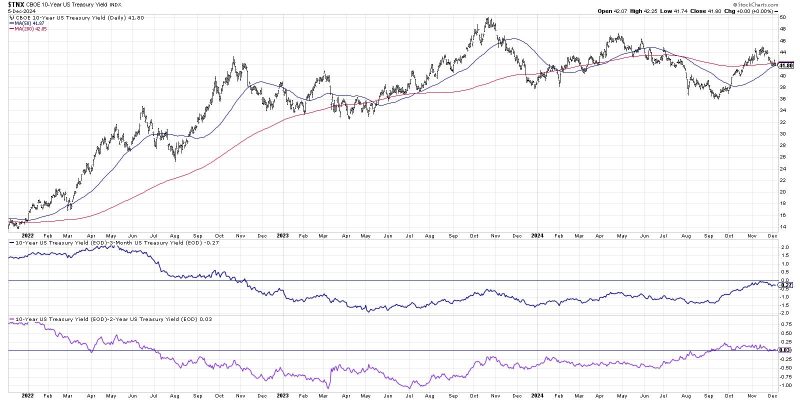The first exchange-traded fund (ETF) that could thrive based on a normal yield curve is the Financial Select Sector SPDR Fund (XLF).
The XLF is a fund that seeks to provide investors with exposure to the Financial Select Sector Index, a benchmark that includes companies from the banking, insurance, financial services, capital markets, mortgage real estate investment trusts (REITs), consumer finance, and thrifts and bankruptcy sectors. With a historic yield of approximately 2.06%, the fund is heavily invested in banking stocks, which make up about 44% of its total assets.
When the yield curve is normal, long-term interest rates are higher than short-term rates, providing an ideal environment for banks and other financial institutions. They can borrow short-term funds at lower rates and lend long-term at higher rates, a discrepancy that fuels their net interest income, a key measure of bank profitability. As a result, they are more likely to pay favorable dividends to their shareholders and show an improved bottom line, which would contribute to the boost of XLF.
Another ETF positioned to benefit from a normal yield curve scenario is the iShares 20+ Year Treasury Bond ETF (TLT).
The TLT offers exposure to long-dated U.S. treasury securities, specifically those with a remaining maturity of 20 years or more. Historically, when the yield curve returns to its normal state, long-term bonds usually provide higher yields than short-term bonds. This can make TLT attractive, as it focuses on long-term treasury bonds, which could see a rise in their yields during such a scenario.
TLT’s appeal also lies in its safety features. Despite the fluctuations in the economic landscape, U.S. treasuries are considered to be among the safest financial assets in the world, providing a haven for investors during periods of economic turbulence. TLT can be a valuable tool to buffer against downturns, while still offering the potential for solid returns in a normal yield curve environment.
In conclusion, while a normal yield curve scenario is generally beneficial for the whole economy, some financial instruments are strategically designed to capture its advantages more effectively. Both XLF and TLT, by virtue of their exposure to banking stocks and long-term treasury bonds, respectively, can capitalize on this economic condition and potential yield high returns for their investors. With their unique alignment to the factors driving a normal yield curve, these ETFs are well-positioned to thrive in this environment.










